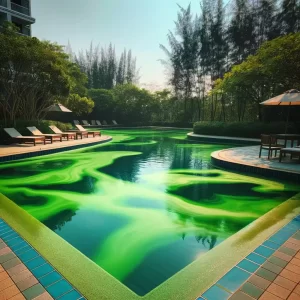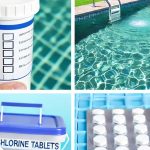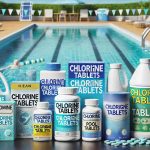Swimming pools are an excellent choice for beating the summer heat. However, when the water in the swimming pool turns green, it can be quite a perplexing situation. Some pool managers may encounter this issue where they add chlorine tablets after refilling the pool, only to find the water unexpectedly turning green. This leads people to wonder about the possible causes of this situation and how to resolve the problem.

The reason behind the discoloration of swimming pool water
Can be attributed to an excess of metal ions. Typically, the quality of pool water requires regular maintenance and monitoring, including the control of metal ion levels. Here is a detailed description of what causes swimming pool water to turn green:
After refilling the swimming pool, it is common to add chlorine tablets or other disinfectants to ensure effective control of bacteria and microorganisms in the water. However, if the concentration of metal ions in the pool water exceeds safe limits during this process, it can lead to the water turning green.
Chlorine tablets are potent oxidizing agents used to eliminate organic contaminants and microorganisms in the swimming pool. However, chlorine tablets also possess the ability to oxidize metal ions, which is why the water turns green when metal ions are in excess.
Different types of metal ions can result in different colors of discoloration. For instance, iron ions can cause the water to turn black-red, copper ions can make it green, and aluminum ions might cause it to turn white.
To address this problem, it is essential to measure the concentration of metal ions in the pool water. Once it is confirmed that metal ions are exceeding safe levels, appropriate measures need to be taken to reduce their concentration and restore the water’s clarity and normal color. This may involve using specialized chemicals to precipitate metal ions or using a filtration system to remove metal particles from the water.
Here’s a step-by-step guide on how to address the issue of discolored pool water:
- Lower the pH Value: Start by gradually reducing the pH value of the water. Metal ion issues often lead to elevated pH levels. You can use pH reducing agents or acidic substances like hydrochloric acid to bring the pH within the normal range, usually between 7.2 to 7.6.
- Add Chlorine to 3.0ppm: Once the pH is within the appropriate range, increase the chlorine concentration to 3.0ppm. This ensures effective control of microorganisms and organic pollutants while aiding in the oxidation of metal ions to resolve the discoloration issue.
- Use Clarifying Agent: Add a suitable clarifying agent to help coagulate and precipitate fine particles, including metal ions. This assists in clearing the water and making it more transparent.
- Activate the Circulation and Filtration System: Turn on the pool’s circulation and filtration system to ensure continuous circulation and filtration of the water. This helps in removing particles containing excess metal ions and further improves water quality.
- Wait for 2-4 Circulation Cycles: After implementing the above steps, allow for 2 to 4 circulation cycles, typically 24 to 48 hours, to observe improvements in water quality. You should gradually notice the water becoming clearer, with the color returning to normal.
- Adjust pH Back to Normal Range: Once the water quality is clear, ensure that the pH remains within the normal range. If necessary, use pH raising agents to adjust the pH to maintain stability and safety, ideally between 7.2 and 7.6.
In conclusion, when faced with green pool water, it is essential not to panic or take hasty measures. Instead, identify the root cause of the problem and take appropriate steps to correct it. Regular maintenance and monitoring of pool water quality are key to preventing such issues.




